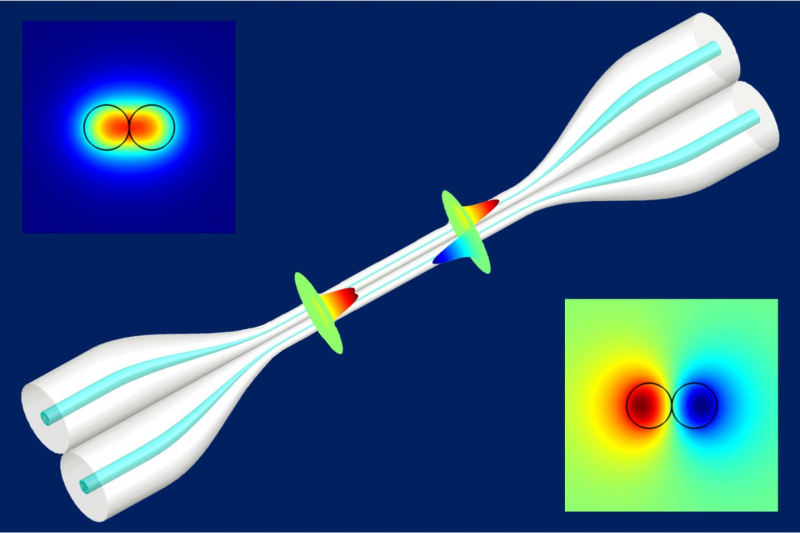Researchers investigating light flow within a waveguide have created a sensor that is about 20 times more sensitive than conventional optical-fibre-sensor-based biochemical sensors
 The concept behind the optical microfibre coupler sensor is the interference of light, which travels along an optical microfibre. Interference is a common natural phenomenon at play within light, sound or even water waves when two or more waves are in the same space.
The concept behind the optical microfibre coupler sensor is the interference of light, which travels along an optical microfibre. Interference is a common natural phenomenon at play within light, sound or even water waves when two or more waves are in the same space.
Optical interference-based sensors are currently used for many applications within the field of biological measurement, and the use of optical fibres makes such devices extremely compact and economic. However, they have a downside – they often exhibit high sensitivity only when the refractive index (RI) of the surrounding medium approaches that of an optical fibre (~1.44).
During the group’s study, they created an optical microfibre coupler sensor capable of achieving ultrahigh sensitivity at low RI (~1.33) by precisely designing the parameter to minimise the difference between the effective group indexes of the ‘even supermode’ and ‘odd supermode’.
What’s a supermode? A typical optical microfiber coupler is comprised of two parallel, closely packed microfibers with two input (P1 and P2) and two output (P3 and P4) ports, two transition tapers, and a central uniform ‘waist-shaped’ region. The modal fields injected from the input modes are known as ‘supermodes’, which include odd and even distributions. When even and odd supermodes propagate along the optical microfiber coupler, a power exchange occurs and the resulting interferometric spectrum can be obtained at its output ports.
The group’s experimental results revealed that their sensor is significantly more sensitive (about 20x) than conventional optical-fibre-sensor-based biochemical sensors.
Explaining the potential for the new sensor, Lei Wei, an assistant professor in the School of Electrical & Electronic Engineering, College of Engineering, Nanyang Technological University, said: “The resulting ultrasensitive mechanism not only creates opportunities for a wide range of applications within chemical and biological sensing fields, but also broadens the repertoire of other interferometric fibre-optic sensors, and even acoustic sensors.”
Thanks to its ultrahigh sensitivity, the group’s sensor is ideal for trace analyte and small molecule detection.
“It may also find applications within the fields of medical diagnostics and environmental monitoring, such as early detection of cancer and other diseases, as well as heavy metal detection in water,” Wei pointed out. “In the near future, we hope to develop it into a new sensing platform with ultrahigh sensitivity and a fast response time feasible for low-cost, point-of-care applications in doctors’ offices.”
The next step for the group is to “make the sensor into arrays and further explore its sensing performance for cancer biomarkers,” said Wei.
The sensor was developed by researchers at Nanyang Technological University and the University of Nebraska-Lincoln.
 Instrumentation Monthly Test | Measurement | Control
Instrumentation Monthly Test | Measurement | Control



